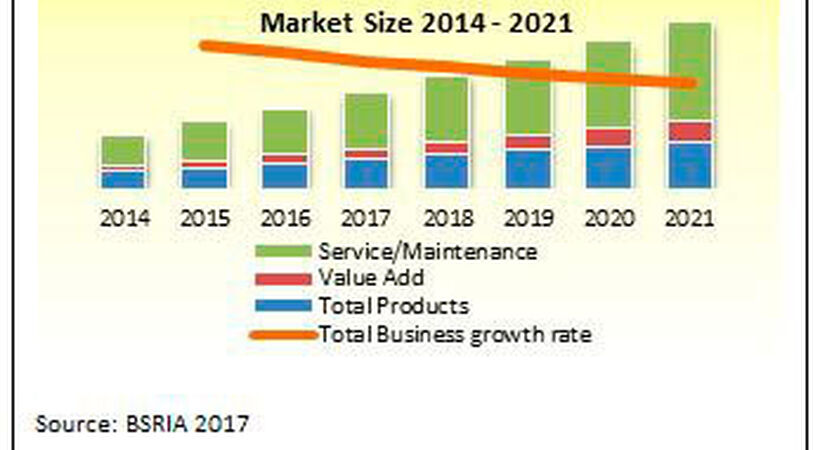Smart Connected HVAC is one of the latest trends that is revolutionising the world of commercial buildings in the US.
Driven by the need to improve HVAC performance and reliability, cutting downtime while reducing maintenance costs, the US market for Smart Connected HVAC is currently growing at a CAGR of over 25 per cent and is forecast to reach US$ 1.8 billion by 2021. The majority of this value is accounted for by maintenance and managed services according to the latest BSRIA market intelligence study.
Smart Connected HVAC is a solution where HVAC equipment can be accessed and controlled remotely, either via the local area network or via the Cloud. It can provide information on the performance and the state of the HVAC equipment, both for real time monitoring / alerts and for analysis, to identify and ideally to pre-empt problems and to optimise performance.
The strongest demand is to be found in buildings of under 50,000 square feet. Vertical markets where the solution is most sought after are led by retail – especially for chains with multiple buildings, offices, hotels and catering and banking.
The majority of the value is derived from packaged rooftops, though there is also a significant market for chiller systems and AHUs. The market is currently dominated by established suppliers of Building Automation and Control Systems and of HVAC, but a significant number of new suppliers are entering the market, including those from outside the USA.
Henry Lawson, senior market research consultant, Worldwide Market Intelligence, BSRIA, said: “BSRIA has been struck by the recent maelstrom of activity in this sector. Accordingly, this study provides a comprehensive analysis of the US market for Smart Connected HVAC, which is rapidly becoming a cost-effective alternative to full-scale Building Automation and Controls (BACS) especially but not only for smaller buildings. The solution enables service managers to monitor and optimise the performance HVAC and in some cases to predict and prevent failures, reducing both maintenance costs and downtime.
“This service is particularly attractive to organisations managing a ‘portfolio’ of small buildings in different locations, where HVAC outages will impact on their operation and where maintenance costs are a challenge. This fairly new value proposition is part of an IoT revolution which will potentially transform the current building services model.”



